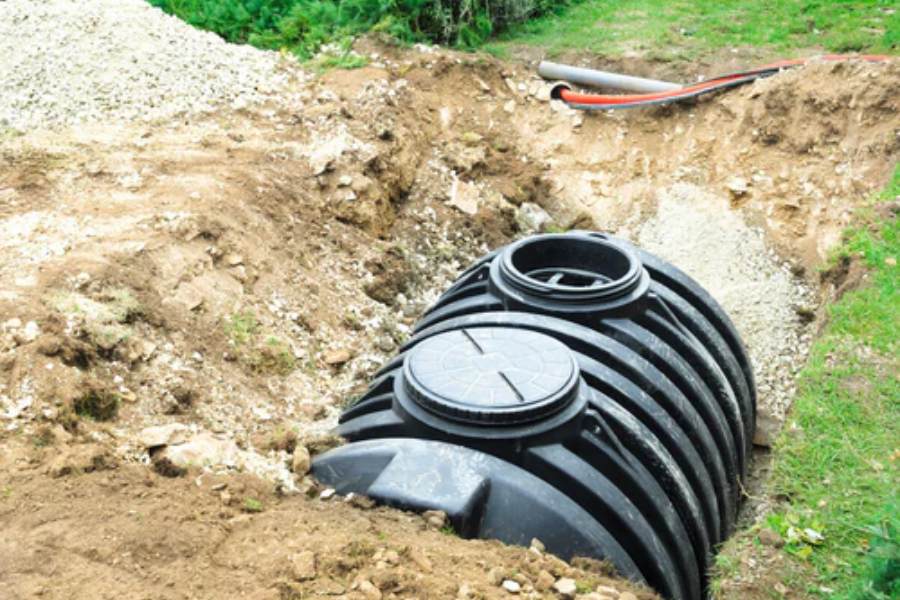Septic systems play a crucial role in waste management for many homes, particularly in rural and suburban areas. These systems are designed for continuous use, but circumstances sometimes arise where they may sit idle for extended periods. This scenario is common for vacation homes, properties between tenants, or residences left vacant during long-term travel. But how long can a septic system sit unused without causing any issues?
Understanding the implications of disuse is important for preventing potential problems and ensuring the system’s longevity. This article will examine the factors that affect septic systems during periods of inactivity. We’ll explore the biological, chemical, and physical processes that continue even when the system isn’t in regular use.
By providing this information, we aim to help property owners make informed decisions about maintaining their septic systems during periods of disuse. With this knowledge, you can save on costly repairs or replacements in the future.

How Long Can a Septic System Sit Unused?
Unused septic systems can often last longer than those in regular use, potentially surviving for over 20-40 years due to the lack of wear and tear. However, inactivity can cause its own set of problems, making it crucial to understand the effects of disuse on a septic system.
Proper care and maintenance can significantly extend the life of an unused system. This guide will explain how to care for unused septic systems, helping you avoid common issues and safely reactivate the system when needed.
Unused Septic Tank Problems
An unused septic system faces several issues. The decline in biological activity due to reduced bacteria levels can hinder waste breakdown. This may lead to clogs when the system is reactivated.
Lack of water flow can dry out pipes and tank components, causing cracks and leaks, particularly in seals and gaskets. This dryness can also affect tank structures, making concrete prone to cracks and plastic brittle. Furthermore, the drain field degrades without regular water. Essential soil bacteria die off, compaction occurs, and plant roots may invade the system. This can damage pipes and reduce absorption capabilities.
Ultimately, these factors collectively threaten the system’s effectiveness and integrity when it’s put back into use, requiring extensive repairs and restoration.
Steps to Prepare a Septic System for Inactivity
Before leaving a septic system unused for an extended period, it’s essential to pump the tank to remove solid waste and sludge, which can harden and cause odors. An empty tank is more resilient to damage and gas buildup.
A thorough inspection of the entire system should be conducted to identify and repair any cracks, leaks, or damage, especially in the drain field and tank components. Addressing these issues promptly prevents further deterioration during inactivity.
Securing all access points is crucial to prevent debris and animal intrusion. This includes using proper covers and sealing gaps to protect the system’s integrity. These steps help ensure the septic system remains functional and minimizes complications when reactivated.
Monitoring and Maintaining an Unused Septic System
Regular inspections and check-ups every few months can help identify damage or leaks, such as wet spots or sinkholes above the tank. It’s important to ensure visible components like pipes are intact and properly sealed.
Keep the area clear of heavy objects and vehicles to prevent soil compaction, while managing plant growth to protect the system from root damage. Monitoring drainage after rain is vital; ensure proper grading so water flows away from the system to prevent pooling.
Promptly addressing any drainage issues helps maintain the system’s structural integrity and effectiveness when it’s reactivated. This ultimately prolongs the tank’s lifespan and reduces repair costs.
Reactivating an Unused Septic System
Before reactivating an unused septic system, conduct a thorough inspection for damage, deterioration, or leaks, and consider pumping the tank to remove any debris. Test the soil absorption area to ensure it can handle wastewater effectively, as poor absorption can lead to failure.
Gradually reintroduce wastewater by starting with small amounts, allowing beneficial bacteria to regrow while avoiding harsh chemicals. During this process, monitor for unusual odors, slow drains, or wet spots in the yard, which could indicate issues.
Hiring a septic professional for a thorough assessment is crucial. Their expertise can identify hidden problems and offer advice on proper maintenance. This helps prevent future issues and extend the system’s lifespan.
Factors Influencing the Durability of an Unused Septic System
The durability of a septic system depends on its type and quality. Concrete tanks are durable but prone to cracking, while plastic and fiberglass tanks resist corrosion.
Modern systems often have better safeguards for periods of disuse, and overall design plays a significant role in their longevity. The system’s age before disuse matters – newer systems handle inactivity better, while older ones may worsen due to existing issues.
Regular inspections and prompt repairs can significantly enhance the system’s ability to withstand periods of inactivity, ultimately prolonging its lifespan and reducing future repair costs.
Extreme temperatures, moisture, and local wildlife affect system longevity as well. Proper protection and maintenance are required to maintain the system’s integrity during inactivity. Adopting preventive measures can help safeguard the system against potential damage during prolonged disuse.

Conclusion
Unused septic systems can last longer than those in regular use, potentially surviving for 20-40 years due to reduced wear and tear. However, inactivity brings its own challenges, including decreased bacterial activity, dried-out components, and drain field degradation.
Proper preparation and maintenance are crucial for preserving an unused system’s integrity. For those wondering how long can a septic system sit unused, it’s important to recognize that regular monitoring, maintaining proper drainage, and preventing soil compaction are essential during disuse. When reactivating the system, gradual reintroduction of wastewater and professional inspection are key.
The system’s durability depends on various factors, including its quality, age, and the environmental conditions it’s exposed to during the inactive period. By understanding these aspects and implementing appropriate care strategies, homeowners can effectively manage their unused septic systems, ensuring longevity and minimizing potential issues when the system is put back into use.


